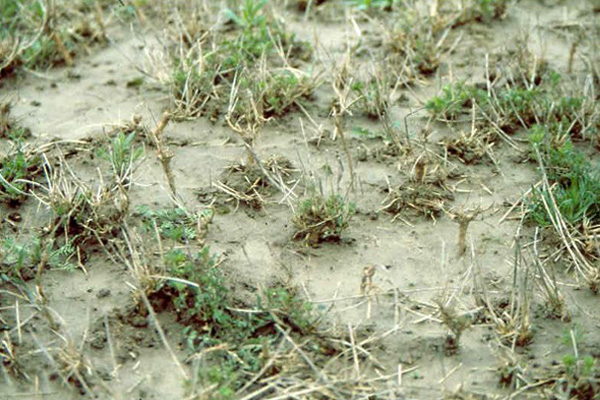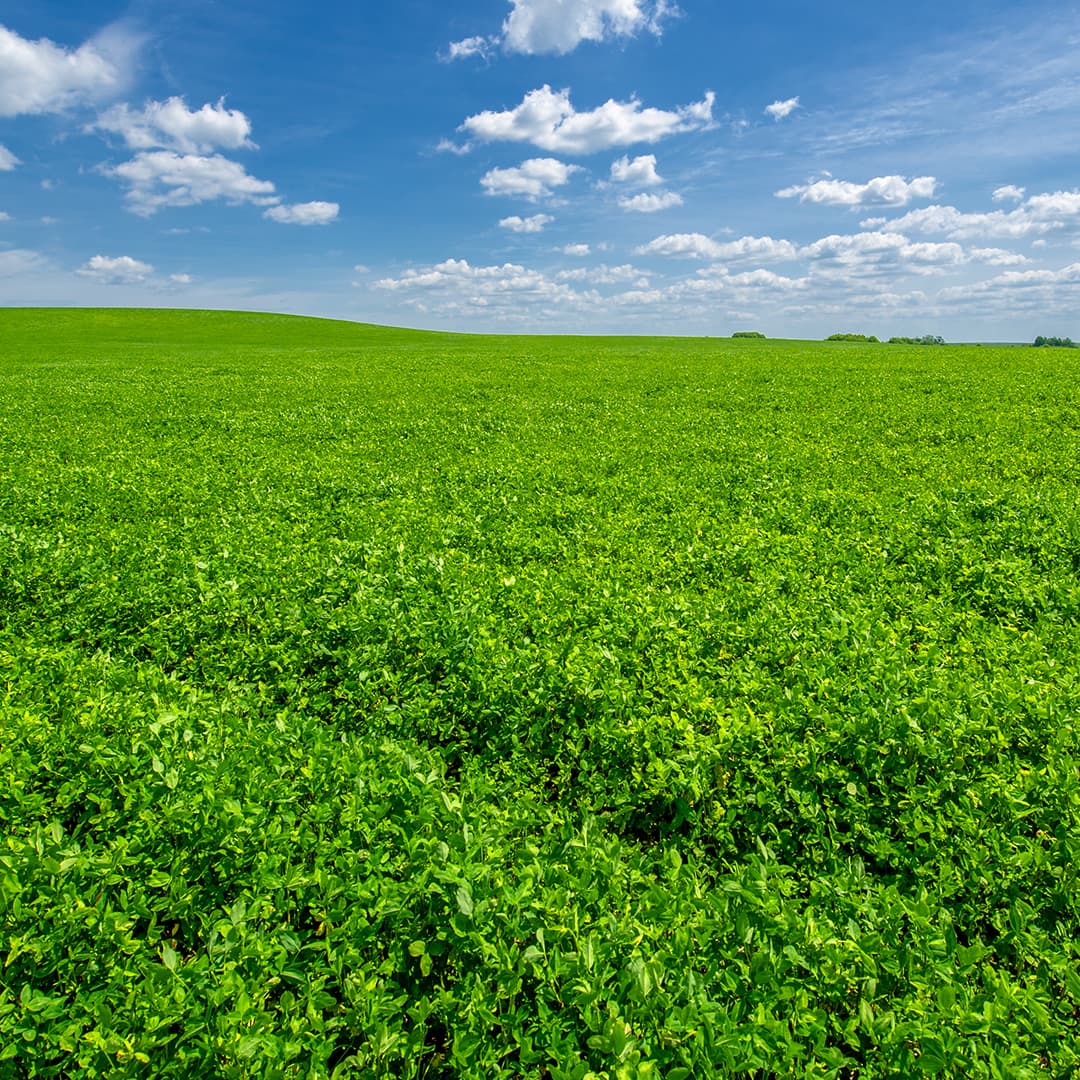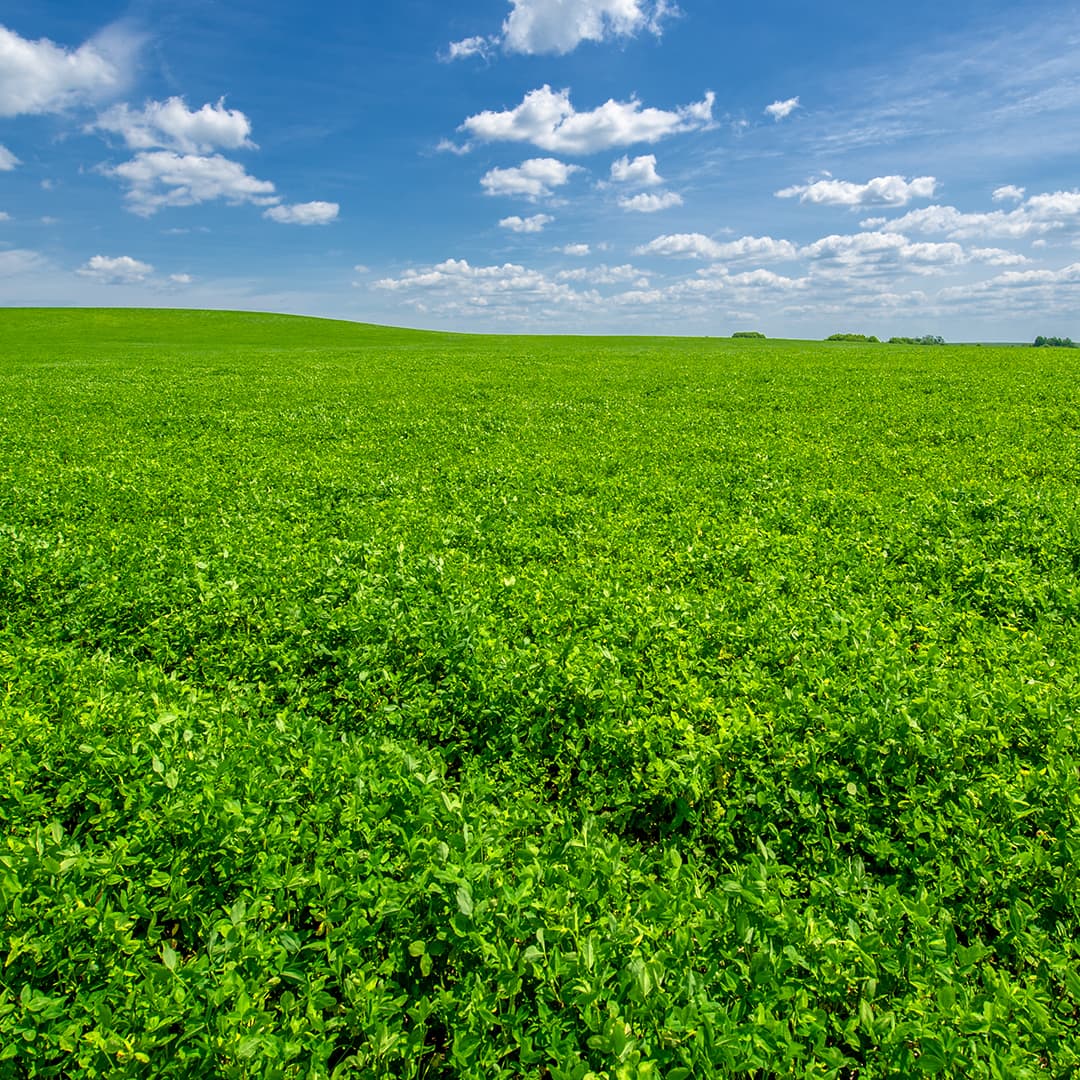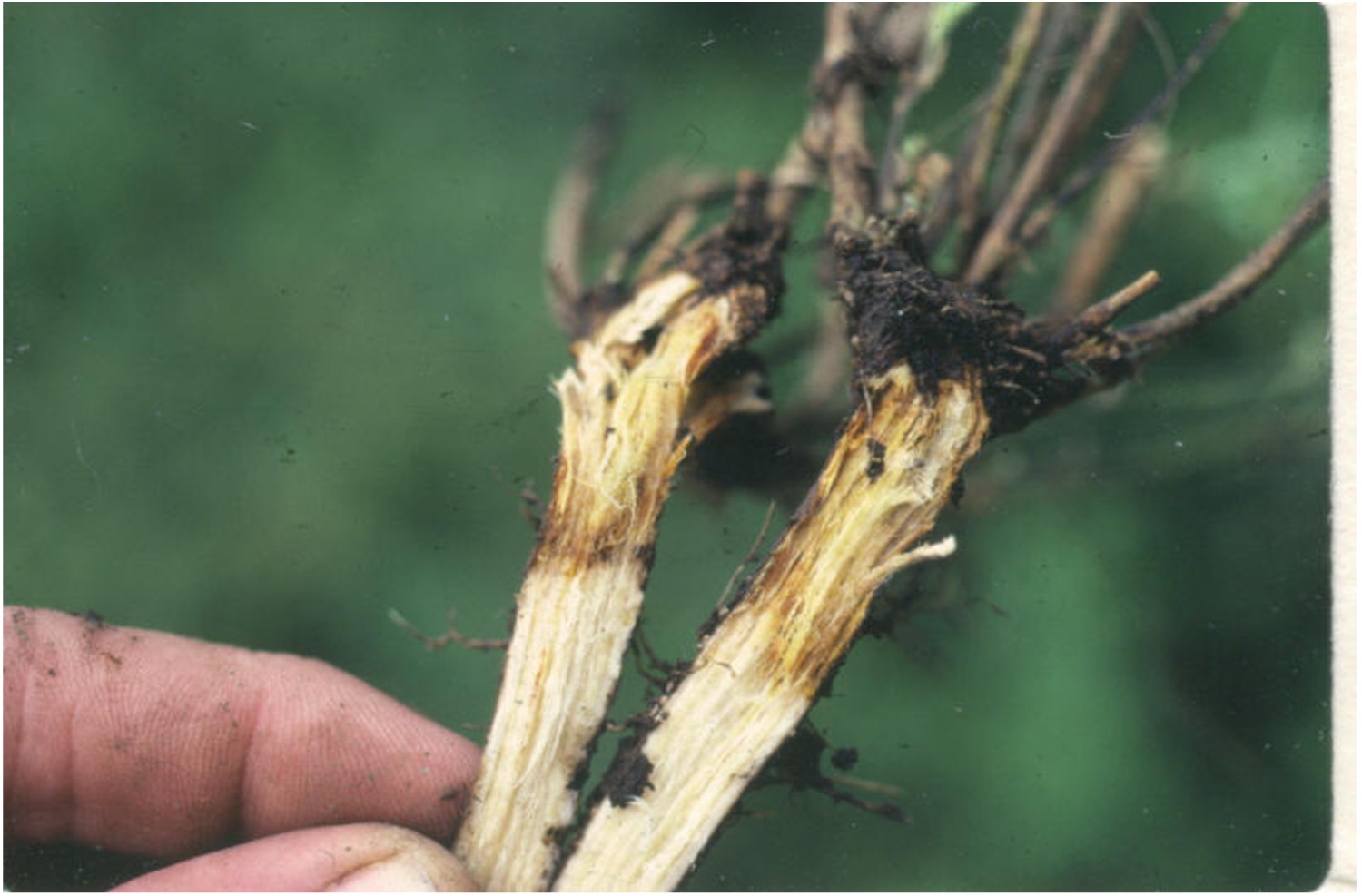Heaving can be a problem for alfalfa stands during cold weather months in the Midwest. Repeated freezing and thawing cause the soil to expand and contract, pushing taprooted plants out of the soil. Heaving occurs primarily in heavy soils with high moisture content and is most common in older alfalfa stands with larger taprooted plants.
Fields with over 1.5 inches heaving will likely have broken taproots and will also suffer significant damage from harvesting equipment. These fields should likely be terminated immediately.
Fields with 1 inch or less heaving are likely to have unbroken taproots and may be salvageable for at least the current year. These fields will likely have delayed green-up.
For more information on heaving and alfalfa management, contact your local alfalfa dealer.
Identifying Heaving Damage
Where heaving is observed, first dig a few plants to determine if the taproot is broken. Plants with broken taproots will likely green up and survive for a short time and then die when weather becomes warm and the soil dries. The length of time before plant death will depend on the length of taproot above the break.- Green-up only if the taproot is broken 3-4 inches below the soil surface.
- Sufficient growth for first crop if the taproot is broken 6-8 inches below the soil surface.
- Growth until first dry spell if the taproot is broken 8-12 inches below the soil surface.
Managing Heaving
It’s best to do nothing to the stands once heaving is observed. Do not go over the field with a roller or cultipacker in early spring to push the crowns back into the soil. This will likely cause more damage than good. Plan on harvesting these fields later than normal (25% bloom) and raise cutter bar at harvest sufficiently to clear the crowns. Natural settling should occur during the year and, if plants are reseeded, stands should survive until the next year. Stands entering the winter with elevated crowns are likely to suffer above average winter injury and kill.Fields with over 1.5 inches heaving will likely have broken taproots and will also suffer significant damage from harvesting equipment. These fields should likely be terminated immediately.
Fields with 1 inch or less heaving are likely to have unbroken taproots and may be salvageable for at least the current year. These fields will likely have delayed green-up.
Preventing Heaving
Heaving is always worse in soils with good moisture content. The most practical method of reducing heaving in future years is to leave some residue on the soil surface over winter. Residue reduces heaving by insulating the soil and reducing the number of times freezing and thawing occurs. Fields not harvested last fall will usually have less heaving that those with fall growth removed. Heaving in future years can also be minimized by having good internal and surface drainage. Tiling may reduce heaving problems depending on the depth of the tile. Planting a grass with the alfalfa has been shown to reduce, but not eliminate heaving. There is no indication of genetic variation in alfalfa varieties for difference in heaving, even the fibrous rooted types.For more information on heaving and alfalfa management, contact your local alfalfa dealer.



